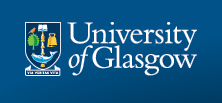Members Login

Channels
Special Offers & Promotions
Researchers from the Universities of Glasgow, Strathclyde, the West of Scotland and Galway have grown three-dimensional samples of mineralised bone from human mesenchymal stem cells for the first time without typical osteoinductive media.
 The research, published in Nature Biomedical Engineering, is the latest advance in a technique known as ‘Nanokicking’, and is an essential first step in the potential culture of cellularised bone grafts.
The research, published in Nature Biomedical Engineering, is the latest advance in a technique known as ‘Nanokicking’, and is an essential first step in the potential culture of cellularised bone grafts.
The technique - developed by a team including Matthew Dalby, Professor of Cell Engineering at the University of Glasgow, and Stuart Reid, Professor of Biomedical Engineering at the University of Strathclyde - uses a Nanokick bioreactor to stimulate the differentiation of mesenchymal stem cells by subjecting them to ultra-precise, nanoscale vibrations. The researchers used Nanokicking on mesenchymal stem cells suspended inside collagen gels to produce a ‘bone putty’ which has the potential to be used to heal bone fractures and fill bone where there is a gap.
Bone is the second most grafted tissue after blood and is used in reconstructive, maxillofacial and orthopaedic surgeries. Currently, only limited amounts of a patient’s own bone tissue can be harvested for use in grafting, and bone from other donors is likely to be rejected by the body. By using a patients’ mesenchymal stem cells to grow bone tissue grafts, surgeons will be able to prevent the problem of rejection, and can bridge larger gaps in bone.
Professor Dalby said: “This is an exciting step forward for our Nanokicking technology and we believe that combining this bone putty with mechanically strong scaffolds will allow us to address large bone deficits in patients in the future. Our hope is to be able to begin human trials in around three years from now.”
Mesenchymal stem cells have the potential to differentiate into numerous other cell types in addition to osteoblasts and Nanokick bioreactors are currently being further tested in a network of laboratories across the UK. The researchers expect that other clinically-relevant applications of nanokicking will be discovered in these partner labs in the future.
The team’s paper, titled ‘Stimulation of 3D osteogenesis by mesenchymal stem cells using a nanovibrational bioreactor’, is published in Nature Biomedical Engineering and available to view
more about university of glasgow
Media Partners


